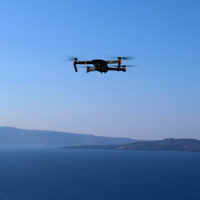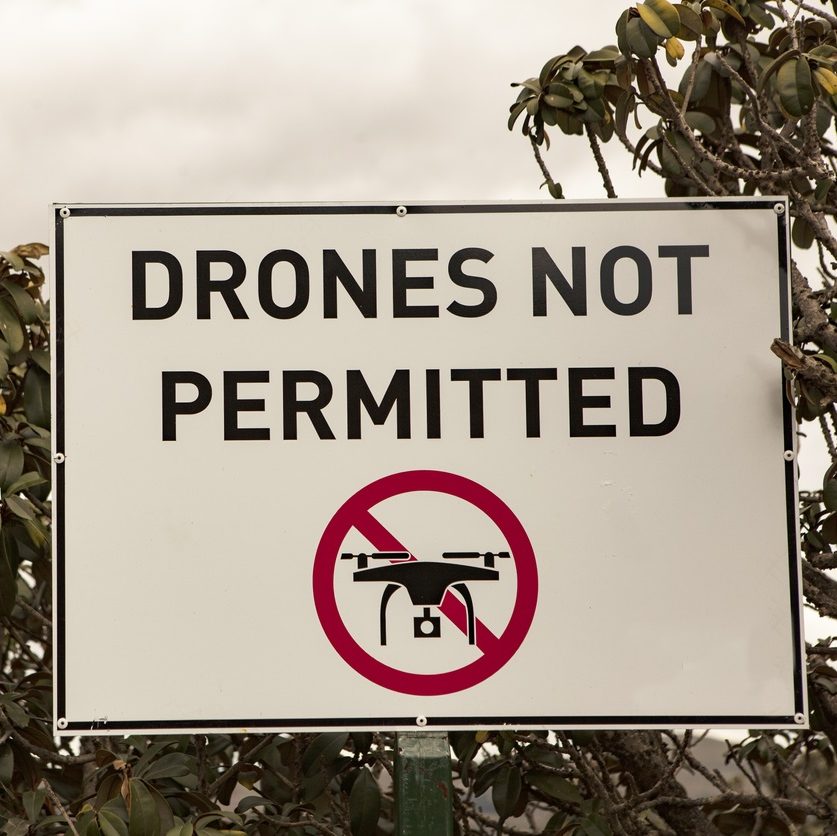
Florida Law Catches Up to Stalking Drones
By James Michael Shaw , Jr., Ryan Hilton | Blog Posts
October 7, 2022
Florida and Oregon have both recently changed their Unmanned Aircraft Systems “UAS” (or “drone”) regulations, joining the vast majority of states looking to protect their residents through the use of their police power.
Florida’s Unmanned Aircraft Systems Act, seeking to control and limit the use of UAS, was approved by the Governor of Florida on June 23, 2017, and took effect July 1, 2017.
The Act strikes a balance, acknowledging federal control over UAS and airspace while permitting the local government to continue to enact and enforce laws not specifically related to UAS but that could involve a UAS: Laws concerning nuisances, voyeurism, harassment, reckless endangerment, and property damage. The Act also prohibits local governments from enacting laws relating to the design, manufacture, testing, maintenance, licensing, registration, certification, or operation of UAS.
The Florida UAS Act also defines the critical infrastructure and prohibits the use of UAS over or around critical infrastructure except in limited situations. An entity seeking to restrict or limit UAS over or around their facilities must apply to the FAA for an infrastructure designation.
Critical infrastructure includes the following:
It is now a second-degree misdemeanor, punishable with fines and imprisonment not exceeding 60 days to knowingly or willfully operate a UAS over a critical infrastructure or to come in contact with or come close enough to interfere with it. The same becomes a first-degree misdemeanor for a second offense, which is punishable by up to one year of imprisonment.
Exceptions to the new regulation include when the operation is by a federal, state, or other governmental entity or on behalf of such entities or when the operation is by law enforcement otherwise complying with the Florida law entitled “Freedom from Unwarranted Surveillance Act.” The Act also exempts operations by the owner, operator, or occupant of the critical infrastructure facility or a person with the consent of the owner, operator, or occupant. The final exception is for commercial operations otherwise in compliance with FAA rules for commercial UAS operations.
The critical-infrastructure portion of the Florida UAS Act will automatically terminate 60 days after the date on which a process pursuant to Section 2209 of the FAA Extension, Safety, and Security Act of 2016 becomes effective. This Section of the FAA Extension Act requires the development of a process to allow facility applicants to prohibit or restrict the operation of UAS in close proximity to a fixed site facility, which is limited to critical infrastructures, such as energy production, transmission, and distribution facilities and equipment, oil refineries and chemical facilities, amusement parks, and other locations that warrant such restrictions. There is not currently a timeframe for this process to become effective.
The Florida UAS legislation includes two other provisions. First, it prohibits the possession or operation of a UAS with an attached weapon, firearm, explosive, destructive device, or ammunition. While the prohibition of possession or operation of a UAS with a weapon is explicit, the statute does not include punishment for its violation. Second, the Act adds an exception to the Freedom from Unwarranted Surveillance Act for communications service providers or their contractors for routing, siting, installation, maintenance, or inspection of facilities used to provide communications services.
Florida’s Freedom from Unwarranted Surveillance Act, which was originally passed in 2013 and has gone through a series of amendments, prohibits a person, state agency, political subdivision, or law enforcement agency to surveil people or privately owned property without consent. The law had previously included a number of exceptions including terrorism, law-enforcement agencies with warrants or a reasonable suspicion involving an immediate need to act to prevent imminent danger to life or serious damage to property. The law also included a number of civilian exceptions for licensed professionals, appraisers, certain photographic necessities of electric, water, or natural gas utilities, aerial mapping, cargo delivery, and for imaging necessary for the safe operation or navigation of a drone legally being used.
Florida’s new act is certainly not alone in regulating UAS, although it is quite deferential to the FAA.
Oregon has also passed an emergency law relating to UAS. Since 2013 Oregon has had a criminal statute relating to UAS, which makes it a Class A misdemeanor to intentionally, knowingly, or recklessly operate a UAS that is capable of firing a bullet or projectile or otherwise causes the system to function as a dangerous weapon. As approved on June 29, 2017, this provision has been greatly expanded with increased penalties. Now, while it is still a Class A misdemeanor to operate a UAS capable of firing a projectile or being used as a weapon, it is a Class C felony to cause the UAS to fire a bullet or projectile or function as a dangerous weapon, and it is a Class B felony to do those things with the result of serious physical injury to another person.
The new law has an exception to the above penalties for a person who meets all of the following criteria:
However, for the exception to apply, the person must not be using the UAS for purposes of crowd management. Additionally, the notice requirements do not apply to some universities and educational institutions.
Oregon has also made it a crime to operate a UAS over privately owned land in a manner that intentionally, knowingly, or recklessly harasses or annoys the owner or occupant, except when performed by a law enforcement agency otherwise complying with Oregon law. A person violating this section will receive a Class B violation for the first offense, a Class A violation for a second offense, and a Class B misdemeanor for two or more convictions. Also, a person with two or more convictions can be prevented from possessing a UAS as a condition of probation.
This new law is in addition to the already substantial body of Oregon statutes related to UAS. Among other statutes, Oregon provides civil penalties for interfering with a lawfully operated UAS. Oregon also gives a civil cause of action to real property owners against UAS operators for low-level flights over the property in certain circumstances, which could lead to treble damages for injury to a person or property and attorneys’ fees in cases under $10,000.00.
More and more states are adopting individual rules for UAS operations within their borders. These rules vary from state to state. Congress wanted to take up the issue and regulate UAS federally, but stakeholders including the Aircraft Owners and Pilots Association, Drone Manufacturers Alliance, the National Business Aviation Association, and the Commercial Drone Alliance, among others, are encouraging Congress to defer regulation of UAS pending the report and recommendations of the Drone Advisory Committee, the “DAC”.
The DAC is tasked with bringing stakeholders together to find consensus in regulating low-level drone use in the national airspace, considering the long-standing divisions between state and federal regulation and the plethora of divergent laws being passed by state and local governments related to low-level flights. Their next meeting is scheduled for July 21, 2017. The industry is hoping for its report and recommendations at some point in 2017.

By James Michael Shaw , Jr., Ryan Hilton | Blog Posts
October 7, 2022


By Ryan Hilton | Blog Posts
January 26, 2021

